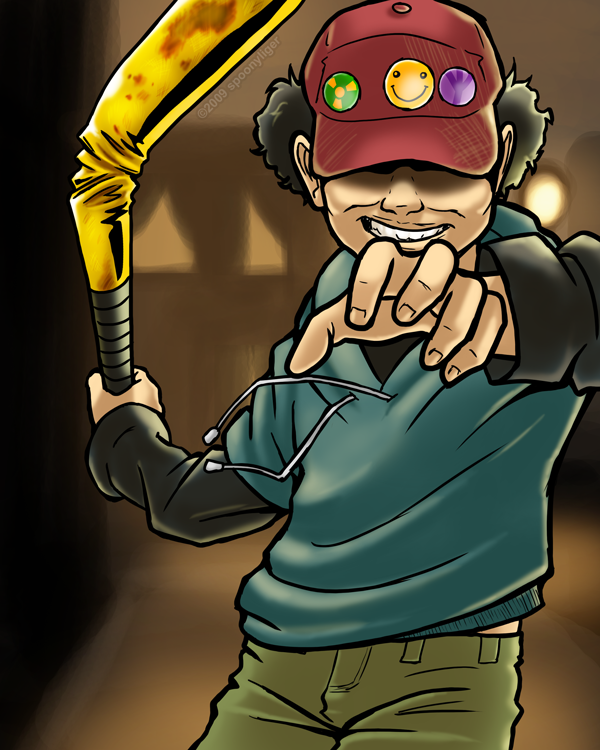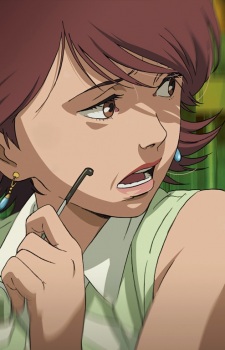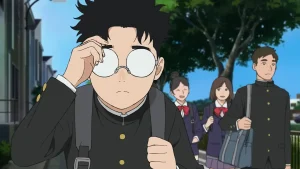Unraveling the Enigma of Reality in “Paranoia Agent” – A Mind-Bending Anime Experience
“Paranoia Agent” isn’t just an anime; it’s a psychological rollercoaster that challenges perceptions and blurs the line between reality and delusion. Crafted by the visionary director Satoshi Kon, this series takes viewers on a surreal journey filled with mystery, suspense, and thought-provoking themes. Let’s delve into the complexities of “Paranoia Agent” and explore why it stands as a must-watch for those seeking an anime experience beyond the ordinary.
Paranoia Agent
“Paranoia Agent” opens with the city of Tokyo gripped by fear as a mysterious assailant, known as Shonen Bat (Lil’ Slugger), randomly attacks individuals with a golden baseball bat. As the city descends into paranoia, two detectives, Keiichi Ikari and Mitsuhiro Maniwa, are assigned to solve the case. However, the narrative takes unexpected turns, challenging the boundaries of reality and illusion, leaving both characters and viewers questioning the nature of their existence.
Main Character: Shonen Bat (Lil’ Slugger)
“Paranoia Agent” deviates from traditional anime structures by presenting Shonen Bat as the central figure. Shrouded in mystery, Shonen Bat is the enigmatic assailant whose attacks instigate the city’s descent into paranoia. Instead of a singular main character, the series unfolds through the perspectives of various interconnected characters, each affected by Shonen Bat’s actions. This unconventional approach adds layers of complexity to the narrative.
Watch Out For These Episodes and Standout Moments
Episodes to Watch:
- Episode 1 – “Enter Lil’ Slugger”
- The gripping introduction to Shonen Bat’s reign of terror sets the stage for the series’ psychological exploration.
- Episode 8 – “Happy Family Planning”
- An episode that delves into societal expectations and the pressure to conform, offering a unique perspective on the series’ themes.
- Episode 13 – “The Final Episode”
- The culmination of the series that masterfully weaves together the threads of mystery and psychology, providing answers to some questions while leaving others open to interpretation.
Standout Moments:
- Dream Sequences
- Surreal and visually striking dream sequences that blur the boundaries between reality and imagination.
- Character Interviews
- Intriguing interviews with various characters, conducted by the detectives, offering diverse insights into their psyches.
- Symbolic Imagery
- Symbolic imagery and recurring motifs that add layers of meaning to the narrative, inviting viewers to analyze and interpret the story.
Genre and Suitability
Genre:
- Psychological, Mystery, Thriller, Supernatural
Suitability:
“Paranoia Agent” falls within the genres of psychological, mystery, thriller, and supernatural. The series is suitable for viewers who appreciate narratives that challenge conventional storytelling structures and delve into the intricacies of the human psyche. Its thought-provoking themes make it a compelling choice for those seeking a mind-bending anime experience.
Why “Paranoia Agent” is a Must-Watch Anime
“Paranoia Agent” distinguishes itself through its unconventional narrative structure, psychological depth, and thematic exploration. Satoshi Kon’s masterful direction weaves a tale that transcends traditional genre boundaries, keeping viewers on the edge of their seats with its unpredictable twists and turns. It stands as a testament to the potential of anime as a medium for thought-provoking and unconventional storytelling.
Plot and Characters
Plot Overview:
The series revolves around the mysterious attacks by Shonen Bat and the ensuing investigations led by Detectives Ikari and Maniwa. As the narrative unfolds, it delves into the interconnected lives of the characters affected by Shonen Bat, exploring societal pressures, mental health, and the fragile nature of reality.
Key Characters:
Shonen Bat (Lil’ Slugger):
The mysterious assailant whose attacks set the narrative in motion, embodying the blurred line between antagonist and symbolic entity.
Detective Keiichi Ikari:
One of the detectives assigned to solve the case, grappling with personal and professional challenges as the investigation unfolds.
Detective Mitsuhiro Maniwa:
Ikari’s partner, whose journey becomes increasingly surreal as the mysteries surrounding Shonen Bat deepen.
Tsukiko Sagi:
A character designer whose creation, Maromi, becomes a significant symbol in the series, reflecting societal expectations and the impact of media on perception.
Harumi Chono:
A wheelchair-bound character with a mysterious connection to Shonen Bat, adding layers of complexity to the overarching narrative.
Conclusion
“Paranoia Agent” challenges viewers to question not just the narrative presented but also the nature of storytelling itself. The series invites audiences to engage in active interpretation, making it a unique and intellectually stimulating experience. In the world of “Paranoia Agent,” reality is a fluid concept, and the journey is as important as the destination.
FAQs
- Q: Is “Paranoia Agent” suitable for viewers who prefer straightforward narratives?
- A: “Paranoia Agent” thrives on ambiguity and psychological complexity, making it more suitable for viewers who enjoy narratives that challenge conventional storytelling structures.
- Q: Does the series provide clear answers to its mysteries?
- A: While some aspects are explained, “Paranoia Agent” intentionally leaves certain elements open to interpretation, encouraging viewers to analyze and draw their own conclusions.
- Q: Are there supernatural elements in “Paranoia Agent”?
- A: Yes, the series incorporates supernatural elements, particularly through the mysterious character of Shonen Bat, adding an extra layer of intrigue to the narrative.
- Q: Can “Paranoia Agent” be enjoyed by those new to anime?
- A: While the series may be more appreciated by viewers familiar with anime conventions, its psychological themes and mystery elements make it accessible to a diverse audience.
- Q: What sets “Paranoia Agent” apart from other psychological anime?
- A: “Paranoia Agent” stands out for its unique narrative structure, blending psychological depth with societal commentary and defying genre expectations.









